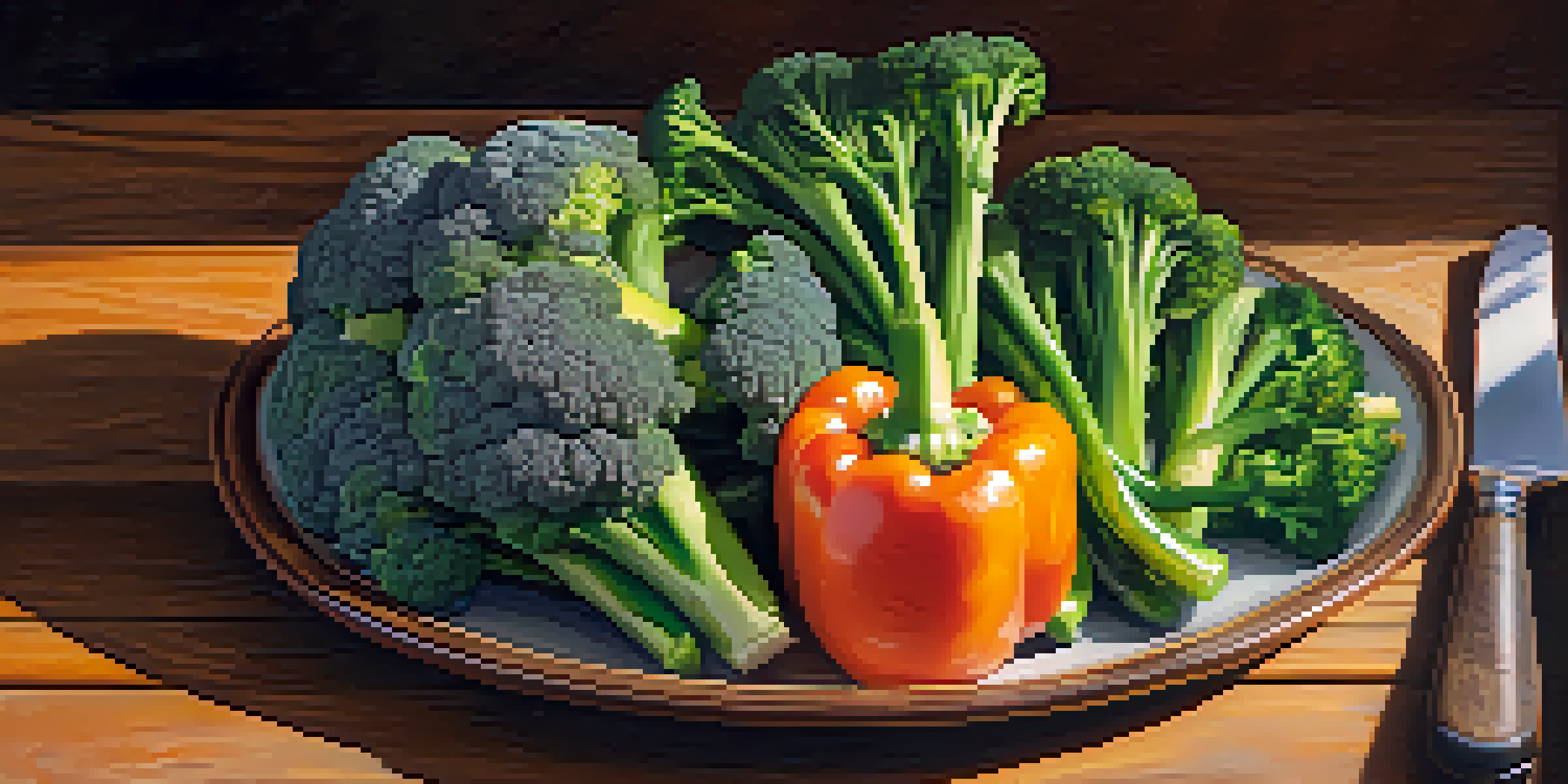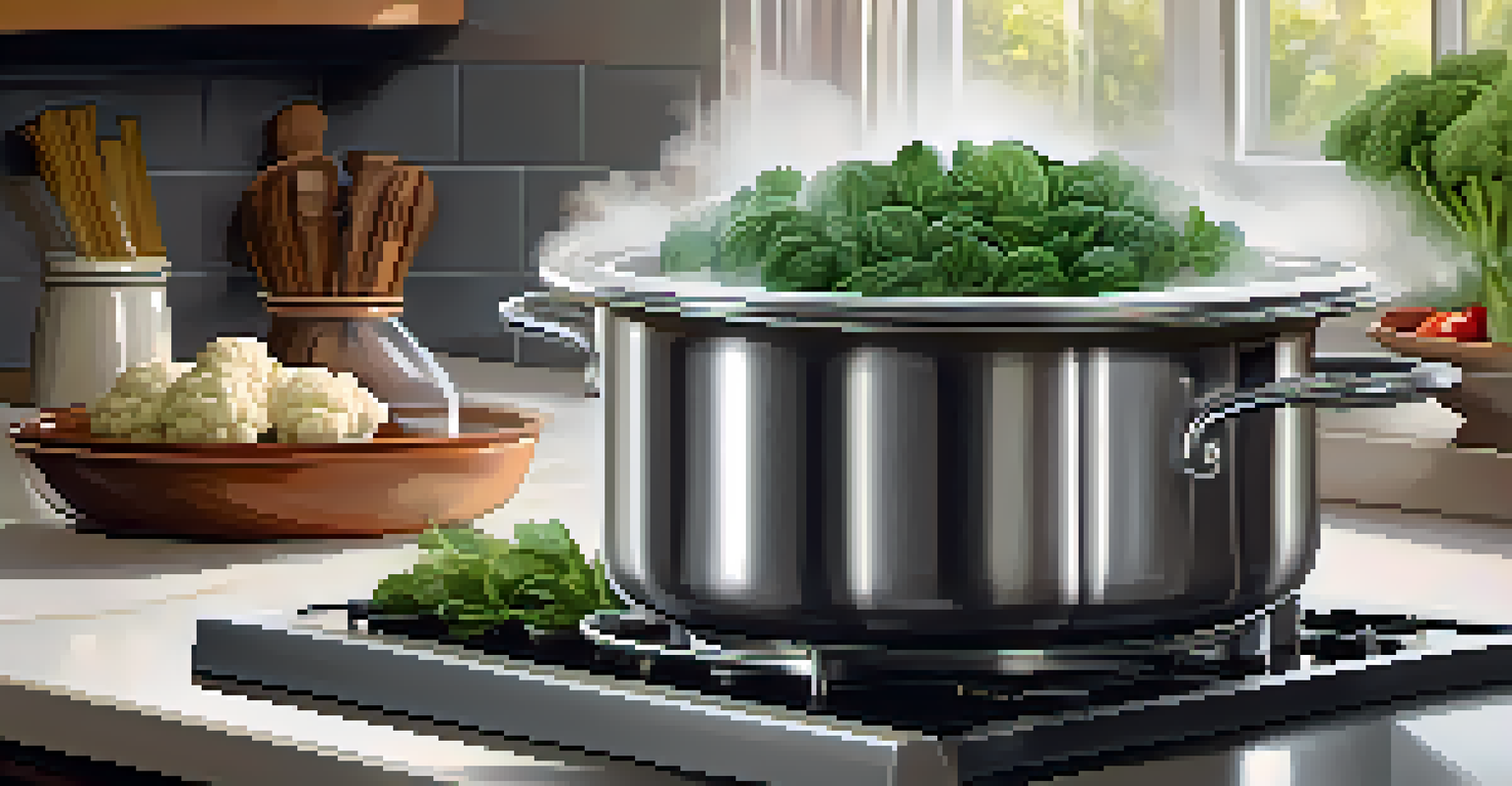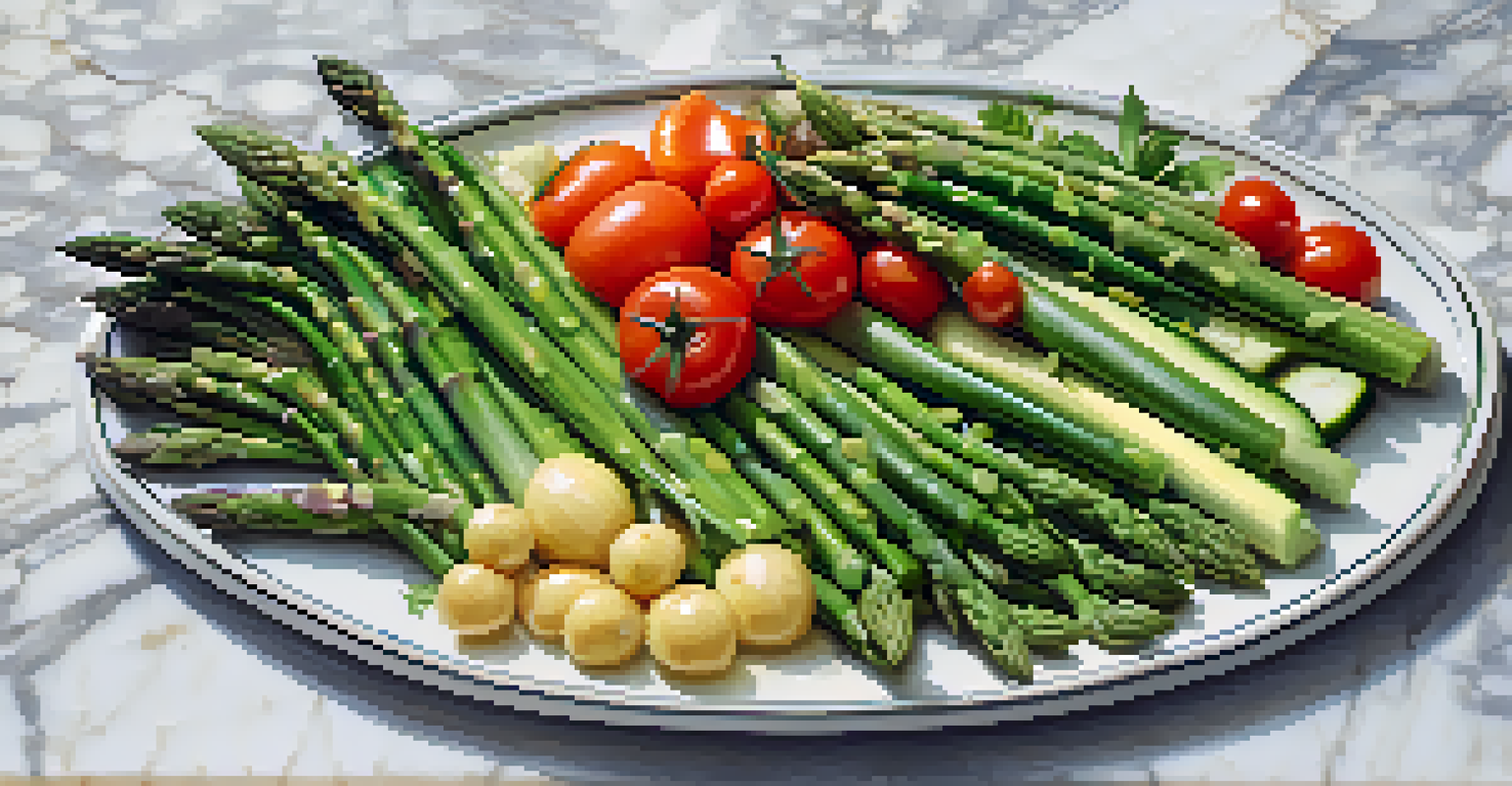Effective Steaming Techniques for Healthy Vegetable Dishes

Understanding the Benefits of Steaming Vegetables
Steaming is one of the healthiest cooking methods available, as it preserves nutrients that boiling can wash away. When vegetables are steamed, they retain more vitamins and minerals, making them a great choice for health-conscious eaters. This method also helps maintain the vibrant colors and natural flavors of the vegetables, enhancing your dining experience.
Steaming is one of the healthiest cooking methods available, as it preserves nutrients that boiling can wash away.
Moreover, steaming requires little to no added fats, making it a low-calorie option that fits seamlessly into various diets. For example, a plate of steamed broccoli can be just as tasty as a sautéed version, without the extra oil. This makes steaming an ideal technique for anyone looking to reduce calorie intake while still enjoying delicious meals.
Incorporating steamed vegetables into your diet can also lead to increased consumption of fiber and essential nutrients. This not only supports digestion but also contributes to overall health. It's an easy, effective way to ensure you're getting your daily servings of vegetables.
Choosing the Right Vegetables for Steaming
Not all vegetables steam equally well, so it's essential to choose the right ones for this cooking method. Leafy greens like spinach and kale, root vegetables like carrots and potatoes, and cruciferous options like broccoli and cauliflower all steam beautifully. These vegetables tend to retain their texture and flavor, making them perfect for steaming.

Some vegetables, such as zucchini and bell peppers, can become mushy if over-steamed, so it's important to monitor the cooking time closely. A good rule of thumb is to cut vegetables into uniform pieces to ensure even cooking. This way, you won't end up with some parts overdone while others are still crunchy.
You can also experiment with combinations of vegetables to create colorful and nutritious dishes. For instance, a mix of carrots, green beans, and bell peppers not only looks appealing but provides a variety of textures and flavors that can elevate your meals.
Essential Tools for Steaming Vegetables
Investing in the right tools can make steaming vegetables a breeze. A good-quality steamer basket or a dedicated steamer pot is essential for achieving the best results. These tools allow steam to circulate around the vegetables, cooking them evenly without direct contact with water.
Vegetables are a gift from nature, and steaming them respects their integrity, enhancing their natural flavors.
If you're short on space or prefer a multi-functional kitchen gadget, consider using an electric steamer or a microwave-safe steaming container. These appliances often come with preset functions that make it easy to steam a variety of vegetables perfectly every time.
Additionally, don't forget about the importance of a lid. Whether you're using a pot or a microwave, covering your vegetables while they steam helps trap heat and moisture, ensuring they cook faster and more evenly. A tight-fitting lid can be the difference between perfectly steamed veggies and a soggy mess.
How to Prepare Vegetables for Steaming
Preparation is key to achieving the best results when steaming vegetables. Start by washing your vegetables thoroughly to remove any dirt or pesticides. Peeling is optional, depending on the vegetable and your personal preference; for instance, carrots can be steamed with their skins on for added nutrients.
Next, cut the vegetables into uniform pieces to ensure even cooking. Smaller pieces will cook faster, while larger ones might need a bit more time. For example, cutting broccoli into florets allows for quicker steaming compared to leaving it whole.
Lastly, consider marinating or seasoning your vegetables before steaming. A light drizzle of olive oil, lemon juice, or your favorite herbs can add flavor without overpowering the natural taste of the vegetables. Just remember to use minimal amounts to keep the dish healthy.
Steaming Times for Common Vegetables
Knowing the right steaming times for various vegetables can help you achieve that perfect tender-crisp texture. For instance, broccoli typically takes about 5-7 minutes, while carrots may require around 8-10 minutes depending on their size. Keeping a steaming chart handy can make meal prep more manageable.
It's also essential to stagger the steaming process if you're cooking multiple types of vegetables. Start with the ones that take longer, like carrots and potatoes, and then add quicker-cooking options like spinach or peas a few minutes later.
To test for doneness, you can poke the vegetables with a fork; they should be tender but still have a bit of bite. This technique not only ensures your meal is perfectly cooked but also keeps the vibrant colors and nutrients intact.
Enhancing Flavors with Herbs and Spices
While steamed vegetables have their own delightful flavors, adding herbs and spices can take them to the next level. Fresh herbs like basil, parsley, or dill can be sprinkled on top just before serving to add a burst of freshness. Alternatively, dried spices like garlic powder, paprika, or cumin can be mixed in before steaming to infuse flavors.
Another great method is to create a steaming broth by adding vegetable or chicken broth to the pot instead of water. This subtle change can significantly enhance the flavor profile of your vegetables. Imagine the difference in taste when carrots are steamed in a savory broth compared to plain water.
Experimenting with different combinations of herbs and spices can lead to exciting new dishes. For instance, a sprinkle of chili flakes can add a kick to your steamed green beans, turning a simple side into a standout dish.
Creative Serving Ideas for Steamed Vegetables
Steamed vegetables can be the star of your meal or a delightful side dish. To make them more appealing, try tossing them in a light vinaigrette or a homemade sauce right before serving. This not only adds flavor but also brings some color to the plate, making your meal visually enticing.
You can also incorporate steamed vegetables into other dishes, such as stir-fries, salads, or grain bowls. For instance, adding steamed broccoli to a quinoa salad with lemon dressing can elevate the dish and make it more satisfying.

Lastly, don’t shy away from garnishing your steamed veggies with nuts, seeds, or a sprinkle of cheese. This adds a delightful crunch and additional flavor, transforming your healthy dish into a gourmet experience.